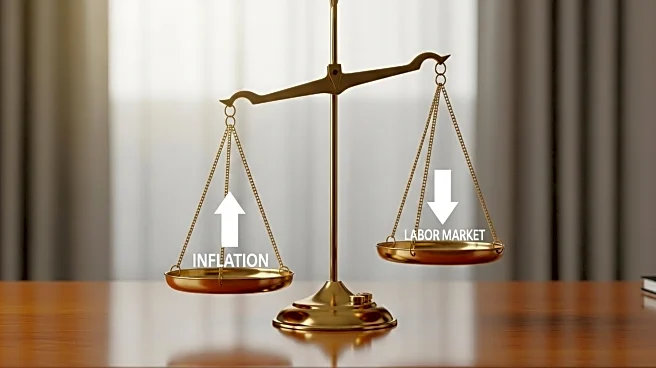What's Happening?
The August 2025 U.S. nonfarm payrolls report revealed a significant slowdown in job growth, with only 22,000 jobs added, far below expectations. The unemployment rate rose to 4.3%, the highest since 2021. This weak labor data has heightened expectations for a Federal Reserve rate cut at the upcoming FOMC meeting, with futures markets indicating a 65% probability of multiple rate reductions by December. The anticipated shift in monetary policy is influencing global equity markets, prompting investors to adjust portfolios to benefit from accommodative conditions while managing inflationary and geopolitical risks.
Why It's Important?
The potential rate cuts by the Federal Reserve are driven by a combination of factors, including a slowing labor market and persistent inflation above the target rate. This dovish stance is affecting U.S. Treasury yields and capital flows, leading to a positive response in global equities. However, the rally is uneven, with defensive sectors like healthcare and utilities gaining traction, while technology stocks face challenges due to higher interest rates. The sectoral impacts of rate cuts highlight the importance of strategic asset positioning to navigate economic uncertainty.
What's Next?
Investors are likely to adopt a risk-aware approach to portfolio construction, emphasizing defensive sectors, commodities, and international diversification. Key tactical adjustments include overweighting healthcare and utilities, increasing exposure to gold and energy, and diversifying into non-dollar assets. These strategies aim to mitigate market volatility and capitalize on the Fed's easing cycle. As the FOMC meeting approaches, proactive portfolio adjustments will be crucial for long-term resilience in an era of shifting monetary conditions.
Beyond the Headlines
The weak jobs report and subsequent rate-cut expectations may have broader implications for economic policy and market dynamics. The emphasis on defensive sectors and commodities reflects a shift in investor sentiment towards stability and risk management. Additionally, the potential for further rate cuts underscores the challenges faced by growth-oriented sectors, prompting a reevaluation of investment strategies and sectoral allocations.











